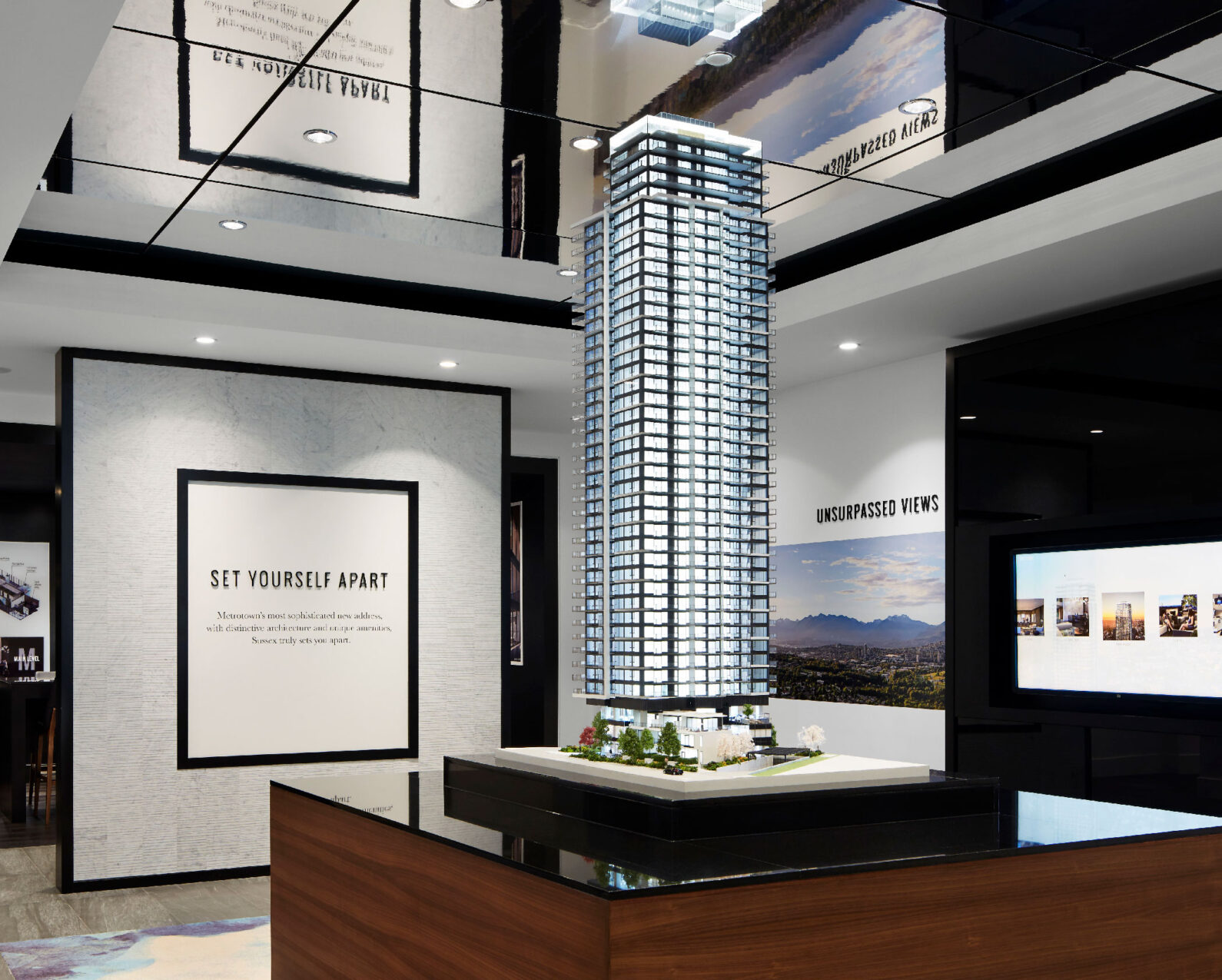AB Scale Models are undisputed masters of their craft. The vision, architectural fidelity, and storytelling artistry that go into any AB Scale Model are absolutely breathtaking. Details bring the models to life, and extend the story, in the viewer’s mind, into a clear vision of a living, breathing future community. And that imaginative moment is the first step, for many, in deciding to make their own life part of that of the neighbourhood.
We have always been astounded at the impeccable work that unfolds in the hands of Ming Yang and his team at AB Scale Models, and we wanted to get a closer look at the process, plus a bit of history on Ming himself, the man behind the magic.
Let’s start with you: how did you get into constructing scale models as a career?
“I grew up in Malaysia post-Second World War, my dad was a furniture craftsman and often took me to work. One day he was working on a cabinet, and someone left behind a miniature metal car in one of the drawers. I was fascinated by this tiny replica. What interested me most was not just its smallness, but how it was made to be so small. I soon discovered that the best way to learn the how of miniature reproduction was to take apart any mechanical thing I could get my hands on and study it closely.”
“When I turned 16, my father was refurbishing an imported lounge chair from the Ming Dynasty, an era known for its handcrafted furniture. For fun, I decided to recreate the chair, drawing each piece to scale on paper. I attempted to recreate several pieces of furniture at a miniature scale based on my drawings. I had no idea at that time that drafting was a trade, and without proper training, everything I did was based on intuition and experimentation. This miniature furniture set, my first real model, now sits in my office as a reminder of that day.”
“I later apprenticed as a model maker with JM Kiang, one of Malaysia’s first model makers. I was taught the trade from scratch. He once took a matchbox and cut it in half to explain what a section drawing is and explained how to read professional blueprints.
“I rose to become JM’s right-hand man and eventually worked on a project for internationally renowned architect Arthur Erickson. The influence Arthur had on my life was immeasurable. My first model company in Malaysia was named British Columbia Scale Model in honour of Arthur’s home province. He introduced me to the international scene of model making and eventually to his home city of Vancouver, B.C., where I eventually immigrated to and where AB Scale Models was born.”
Tell us a little about your team: how do you manage the workflow of such complex reproductions?
“Our shop and employees are quite adaptable. Our workspaces expand and contract as new projects come in and others come to a close. This flexibility is necessary due to the nature of the size, shape, and character of each model. Our ability to adapt is an integral part of how we maintain our efficiency and effectiveness. From afar, our operation seems chaotic. Our philosophy through all this apparent chaos and bustle has remained constant: organization in such a face-paced environment actually involves a highly controlled amount of disorganization. Over the decades, we’ve become so familiar with the process of creating a model that, as organizers of this controlled disorganization, we understand precisely how to optimize the collective strengths of our workforce.”
How is building scale models similar to full-scale construction? How is it different?
“When I was in Malaysia, I shadowed engineers on construction sites. I spent most of my days in a hard hat, scurrying up elevator shafts or burrowing through air-conditioning ducts with electrical plans and engineering specs in hand. At night I would go to JM Kiang’s workshop for a quiet evening of model-making. Jumping between the two worlds, the heart-pumping workout during the day and the calm needle-threading work at night, was jarring. It’s here that I learned the significance of understanding first-hand the intricate details in the bustle of a construction site as well as mastering efficiency in the delicate and exacting art of model-making.”
How has the art of scale models shifted and changed over the years?
“The past two decades have seen staggering developments in the way models are built. What used to take hours to carve and stitch by hand now takes just seconds on our latest laser cutting and engraving machines. We quickly found that we could produce the same high-quality models we were known for, only much faster than we had ever done before. We could have stopped innovating, but our clients continued to push us. Through countless trips overseas to wholesalers, hobby shops, and exhibitions, we continue to find new materials and new ways of employing existing materials. We recently acquired a 3D printer, one of the first three sold in Canada at the time. We’re hoping it won’t betray us and replace our employees! In all seriousness, while our company, our approach, and most importantly our models are always evolving, we know that days without employees is not near. It is virtually impossible to teach a machine what colour of paint “feels right” or how to cut a piece so the assembly process is seamless. In our trade, the human touch without technology is slow and underpowered.”
Do you interface with any other disciplines (sculptors, architect, landscape architects, artists) as part of the process?
“The word “model maker” is sometimes misleading because it encompasses a vast array of specialties. From our tree makers to our painters, our lighting technicians to our CAD (computer-aided design) draftsmen, all of the specialists at AB Scale Model have spent years honing their craft. Each of these roles is indispensable, but together they craft the skyline of cities around the world.”
Interviewee: Ming Yang
Past Volumes

Volume 35
Summer 2022
Click below to read

Volume 34
Winter 2021
Click below to read

Volume 33
Summer 2021
Click below to read

Volume 32
Winter 2020
Click below to read

